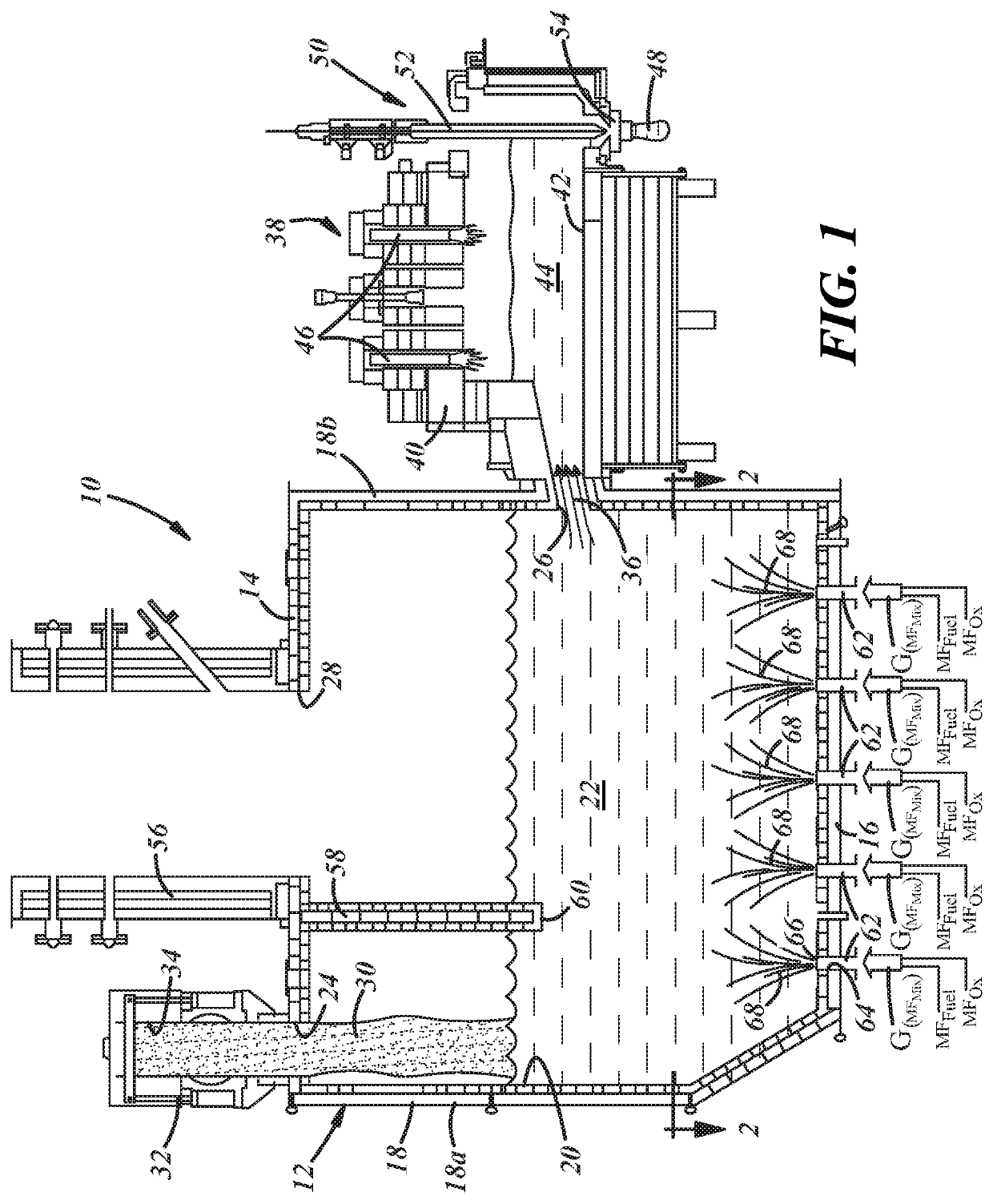Feed Material for Producing Flint Glass using Submerged Combustion Melting
a technology of flint glass and combustion melting, which is applied in the direction of glass making apparatus, glass melting apparatus, manufacturing tools, etc., can solve the problems of high temperature, high temperature, high temperature, etc., and achieve the effect of reducing the redox ratio
- Summary
- Abstract
- Description
- Claims
- Application Information
AI Technical Summary
Benefits of technology
Problems solved by technology
Method used
Image
Examples
example 1
[0051]
Batch RecipeMaterialWeight (kg)Sand351.7Soda Ash108Syenite27.1Limestone98.9Sulfate1.99Manganese Oxide1.47Flint Cullet500
Average Glass CompositionComponentContent (wt %)SiO274.2Na2O12.4CaO11.4Al2O31.4Total Iron as Fe2O30.036SO30.09MnO0.14Average Glass Redox0.1
Average Measured Color ValuesDominant Wavelength573 nmPurity10%Brightness66%
example 2
[0052]
Batch RecipeMaterialWeight (kg)Sand349.3Soda Ash103.8Syenite28.2Limestone103.4Sulfate6Se mix (90 wt % Soda)1.19Flint Cullet500
Average Glass CompositionComponentContent (wt %)SiO273.6Na2O12.9CaO11.3Al2O31.4Total Iron as Fe2O30.055SO30.09Se0.0001Average Glass Redox0.35
Average Measured Color ValuesDominant Wavelength572 nmPurity12%Brightness58%
example 3
[0053]
Batch RecipeMaterialWeight (kg)Sand349.3Soda Ash103.5Syenite28.2Limestone103.4Sulfate6Se mix (90 wt % Soda)1.54Flint Cullet500
Average Glass CompositionComponentContent (wt %)SiO273.6Na2O12.9CaO11.3Al2O31.4Total Iron as Fe2O30.056SO30.09Se0.0001Average Glass Redox0.35
Average Measured Color ValuesDominant Wavelength573 nmPurity12%Brightness58%
PUM
| Property | Measurement | Unit |
|---|---|---|
| temperature | aaaaa | aaaaa |
| temperature | aaaaa | aaaaa |
| temperature | aaaaa | aaaaa |
Abstract
Description
Claims
Application Information
 Login to View More
Login to View More - R&D
- Intellectual Property
- Life Sciences
- Materials
- Tech Scout
- Unparalleled Data Quality
- Higher Quality Content
- 60% Fewer Hallucinations
Browse by: Latest US Patents, China's latest patents, Technical Efficacy Thesaurus, Application Domain, Technology Topic, Popular Technical Reports.
© 2025 PatSnap. All rights reserved.Legal|Privacy policy|Modern Slavery Act Transparency Statement|Sitemap|About US| Contact US: help@patsnap.com


